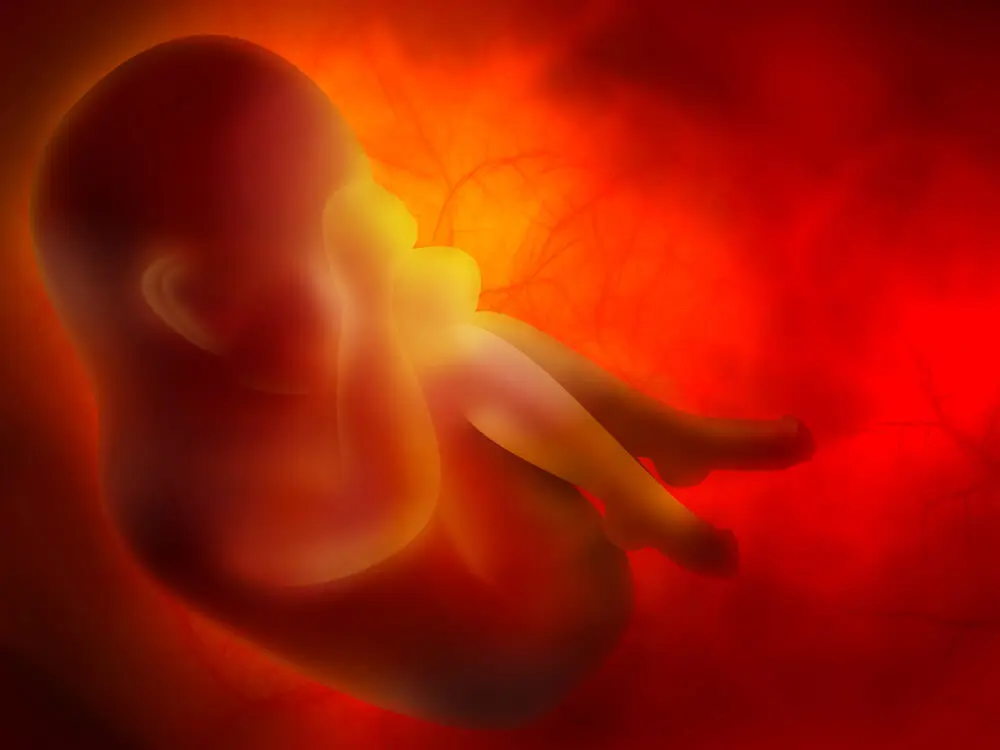Posterior or Anterior Placenta: What Does it Mean in Pregnancy?

Posterior and anterior placenta are medical terms (along with fundal placenta) used to describe where the placenta attaches after fertilization occurs.
They aren’t connected with abnormalities or disease. Many wonder why it’s important to establish this. The answer is that determining whether there’s a fundal, posterior or anterior placenta makes it possible to predict when the mother will begin to feel fetal movements. Also, it can help to detect if there’s any alteration in the location of the placenta.
How is it possible to establish the location of the placenta? An ultrasound should be performed, which is a regular part of prenatal checkups. Once experts have established whether there’s a fundal, posterior or anterior placenta, the mother will have more information about her pregnancy.
The placenta

The placenta is the only human organ that’s present temporarily, only in the woman’s body and only during pregnancy. It’s similar in appearance to the liver and is full of blood vessels.
The fundamental role of this organ is to provide the necessary nutrients to the fetus. Also, since the baby doesn’t breathe inside the womb, it only consumes the oxygen that comes from the placenta, through the umbilical cord.
The placenta attaches to the walls of the uterus, but not always in the same place. It’s usually located at the top, front, back or side. This gives rise to the placenta anterior, posterior or fundal terms. If it’s fixed in another area, there may be problems during pregnancy.
The posterior, fundal or anterior placenta
We speak of anterior placenta when this organ is located on the front wall of the uterus. It’s called “anterior” precisely because it’s located “before” the uterus as such. It can be located on the left or right side, but always at the front of the uterus.
The posterior placenta is located in the area of the fundus of the uterus. In other words, it’s attached to the wall of the uterus that’s closest to the mother’s back. As with the anterior placenta, it can be located on the left or on the right.
The fundal placenta is the name given to the placenta located in the upper part of the maternal uterus. It’s closest to the fallopian tubes and experts say it’s by far the best location for the placenta. It’s also known as the “high anterior placenta”.
The baby’s movements according to the location of the placenta
The anterior placenta is normal, but this position causes the fetus’ movements to be felt later than usual. They’re usually only felt until after 28 weeks gestation, because this location dampens fetal movements. If there’s no movement after this time, you should consult a doctor.
In the case of posterior placenta, it’s very likely that movements will be felt earlier than in the case of anterior placenta. Only if such movements don’t occur or diminish at a given time should a doctor be consulted.
When there’s fundal placenta, fetal movements usually appear between 18 to 20 weeks of pregnancy, for first-time mothers. If there have been previous pregnancies, they may be felt at 16 to 18 weeks.
Low anterior placenta
As indicated above, the anterior, posterior or fundal placenta is considered normal. However, there’s a possibility that the placenta may be attached in the wrong area and this can lead to some complications for the pregnancy.
Low anterior placenta means that the placenta is attached to the front of the uterus, but very close to the internal cervical canal or even covering part of the internal cervical canal. This usually gives rise to bleeding late in the second trimester, without pain.
Types of low anterior placenta
There are several types of low anterior placenta, depending on its location. They’re as follows:
- Type I or low insertion placenta. In this case, it doesn’t reach the cervix.
- Type II or marginal placenta. It reaches the opening of the cervix, but doesn’t cover it.
- Type III or partial occlusive placenta. The placenta partially covers the cervical canal.
- Type IV or total occlusive placenta. The cervical canal is completely covered by the placenta.
Read also: A Brown Discharge During Pregnancy: What Does it Mean?
Causes
Why does this type of anomaly occur? There are several reasons that give rise to this placental location. The main ones are the following:
- Multiparity. When a pregnant woman has had two or more deliveries.
- Multifetal pregnancy. When there are several fetuses, as in the case of twins, triplets, etc.
- Previous cesarean section.
- Abnormalities in the uterus. For example, fibroids or previous curettage.
- Previous surgery on the uterus.
- Advanced age of the mother.
- Smoking.
Treatment

If there’s low anterior placenta, the physician will evaluate which treatment to follow. This will depend on the severity of the case and the mother’s general state of health. When the first episode of vaginal bleeding occurs, the following actions are carried out:
- Hospitalization. Observation is the goal.
- Modified rest. This consists of avoiding any activity that increases intra-abdominal pressure for a long time.
- Pausing sexual relations. Sex in these conditions may be risky, so it’s put on hold.
If the bleeding stops, the mother is discharged. If there’s a second episode of bleeding, the patient should be re-hospitalized until delivery.
The doctor will tell you if there’s a problem with the placenta
Low type IV placenta previa is the most delicate condition of all. It usually causes heavy bleeding towards the end of pregnancy, when the cervix changes and prepares for delivery. It’s very important to follow the indicated treatment strictly.
There’s another type of anomaly known as “placental accreta“ which isn’t very common. It occurs when the placenta fails to attach or shows some degree of invasion into adjacent areas. In this, as in the other cases, any unusual symptoms should be reported to the physician as soon as possible.
All cited sources were thoroughly reviewed by our team to ensure their quality, reliability, currency, and validity. The bibliography of this article was considered reliable and of academic or scientific accuracy.
- Mayra, P. R., Rosalina, V. L., López, G., Iruretagoyena, J., & Magness, R. (2014). Regulación del flujo sanguíneo uterino. I. Funciones de estrógeno y receptores estrogénicos α/β en el endotelio vascular uterino durante el embarazo. Revista chilena de obstetricia y ginecología, 79(2), 129.
- Flores Paredes, R. G. (2020). Embarazo múltiple en útero didelfo y bicollis. Reporte de caso. Alerta (San Salvador).
- Panduro-Barón, J. G., Panduro-Moore, E. G., Pérez-Molina, J. J., Rosas-Gómez, E. S. M., Peraza-Martínez, D., & Quezada-Figueroa, N. A. (2017). Cambios en la estática fetal y factores predisponentes durante el embarazo. Ginecología y obstetricia de México, 85(8), 519-524.
This text is provided for informational purposes only and does not replace consultation with a professional. If in doubt, consult your specialist.








